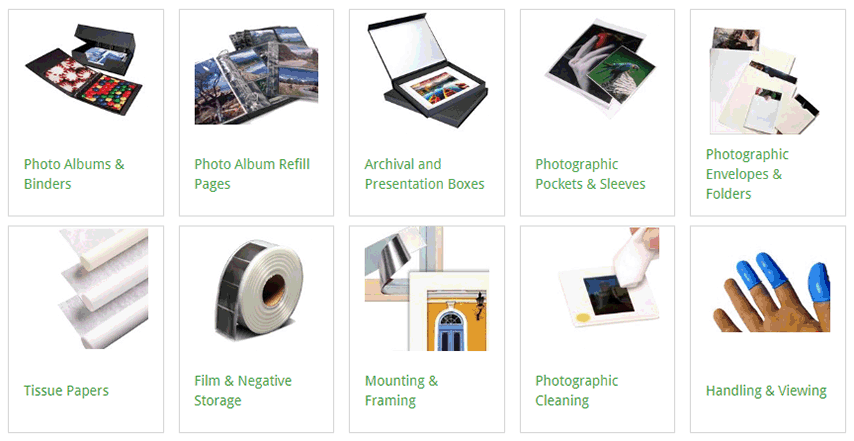Identification of Photographic Processes – Part 2 - If you missed part one, you can read it here.
This article covers the photographic processes that you are most likely to find in your collection. As you read through you'll notice that details of how a photograph deteriorates such as fading and yellowing are included, this is because how a photograph ages and falls apart can be unique to a process, and so provides valuable information to help identify the process.
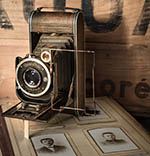
Dates for the period that the process was in use are included. Please bear in mind there is always an enthusiastic photographer reviving and using historic photographic processes. Indeed, there are many daguerreotypists working today. So, just because a process fell out of favour in the 1860's it might still be being used somewhere!
Here is an approximate timeline showing when the various processes have been used, over the last 160 years
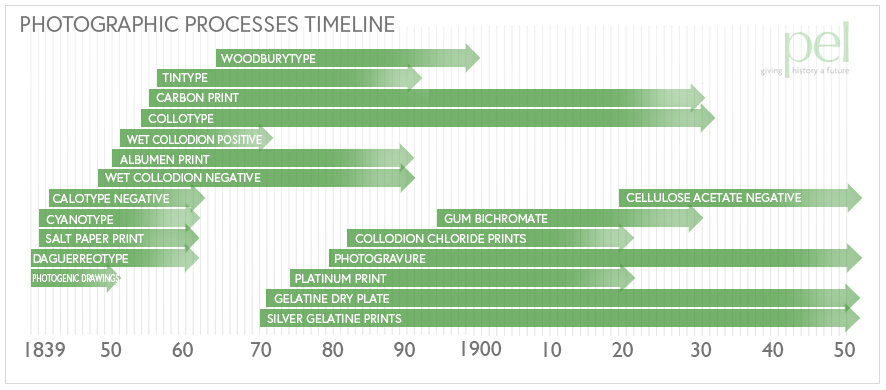
This blog discusses the most common processes;
Daguerreotype,
Salt Paper Prints,
Cyanotype,
Albumen,
Wet Collodion Positives,
Tintype,
Platinum,
Gelatine.
A quick refresher
You've hopefully read the first part of this blog and you have cleared a space to work, you have your nitrile gloves or finger cots, a pencil and paper. You've made sure you have good light and a x10 hand held magnifier You are ready to start …


Photographic Positives
- Popular from the early 1840's until the the 1860's
- On a copper plate covered with silver
- Were usually placed into a small hinged case made from wood and covered in leather or paper, but remember, that in the intervening years that the daguerreotype and its case may have parted company
- Have a very mirrored appearance
- Appears as a positive or negative depending on the angle of view
- Women will be wearing dresses with sleeves that are fairly close fitting with a skirt that is smooth and bellshaped. Men's suits are tight and cut close to the body
- May corrode and become blackened with age
- A unique image
- May be confused with wet collodion positives and tintypes but neither of these have the highly mirrored appearance of a daguerreotype
- You will find them in the UK but the daguerreotype was far more popular in the USA and Europe
Salt Paper Print
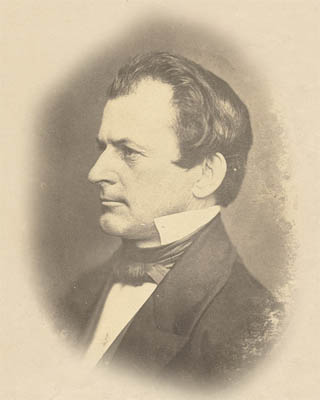
- Used from 1840's to the 1860's
- On paper
- Paper fibres visible in image using your hand held magnifier
- No binder layer
- Matte image
- Image is a warm tone; brown to violet
- Not a unique image because it is made using a negative
- Men will be wearing fancy waistcoats. Women's hair will be styled with dangling side ringlets with a bun at the back
- Fades and yellows with age
- Quite unusual to find in family photograph collections
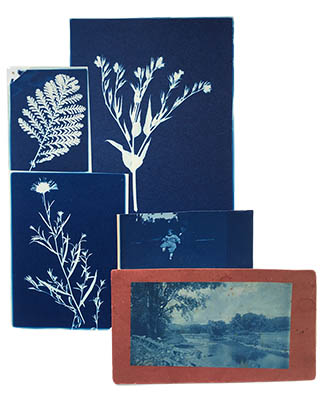
- Used from the 1840's right through to the present day
- On paper
- Paper fibres are visible when viewed using your handheld magnifier
- No binder layer
- Matte image
- Image is a bright, uniform blue
- Most commonly found in archives as blueprints
- The are found in family photograph collections but they are quite unusual
Click here for acid-free unbuffered interleaving tissue paper | Photographic envelopes and folders

- In use from the 1850's to the 1890's
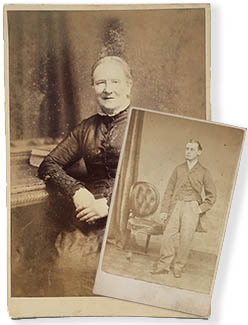
- The most popular form of photographic print in the nineteenth century. You will find them everywhere. You will find a lot in your collection if you collect historic photographs. A common form of presentation was the Carte de visite (from 1854) which was replaced by the Cabinet Card
(pictured right)
- On paper
- Usually printed on thin paper. They will roll up when not adhered to a board (as shown in the image below). It is for this reason that most of the albumen prints that you find in your collection will be adhered to something, normally a board

- Paper fibres show through the albumen with magnification
- Have a binder layer
- Vary from slightly glossy to very glossy
- Image tone is warm; from brown to violet. However it is estimated that 85% of albumen prints show distinct fading of the image tone
- In the 40 years that albumen prints were popular fashions changed radically. You could look for caged crinolines for women from 1850 to the 1870's, and from the late 1860's to the mid 1880's Princess Alexandra style fringes. From 1870 to 1880 backdrops showing the outdoors were popular, so look for 'natural' backdrops painted with stiles, foliage, and bridges
- Fades, yellows and cracks with age. The cracks are visible under magnification using your handheld magnifier. The cracking looks like crazy paving


Wet Collodion Positives

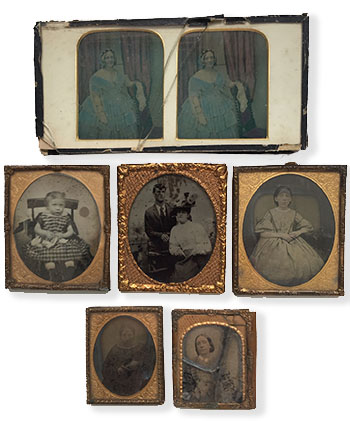
- In use from the 1850's to the 1870's
- On glass
- Were put into cases that are very similar to those used for daguerreotypes which can lead to confusion when trying to tell them apart from daguerreotypes. However they do not have the mirrored appearance of a daguerreotype and they always appear as a positive regardless of the angle which you view them from
- Have a creamy, whitish tone
- Remember, the photograph may have lost its case
- Look for neutral backgrounds and simple settings. For children, girls will have short crinolines with pantaloons showing. The trouser length will vary with age for boys, with dresses for very young boys
- Glass is fragile so many wet collodion positives are cracked or broken
- Also known as an ambrotype
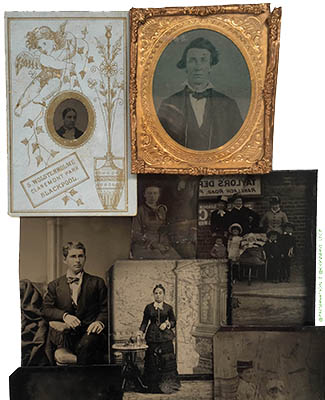
- In use from the mid 1850's until well into the twentieth century
- On coated iron
- Were put into cases the similar to daguerreotypes and wet collodion positives. However they do not have the mirrored appearance of a daguerreotype. They always appear as a positive regardless of the angle of view the same as wet collodion positives but the image in a tintype has a very 2D appearance, whereas the image in a wet collodion positive is 3D in appearance
- They are cream/tan in colour
- A popular type of photographic process with street photographers, so you will find tintypes showing people outdoors, for example outside shops and on the beach as well as posed studio shots
- The iron support is very thin and may become crimped, dented and bent. If the coating gets damaged exposing the iron below you may see rust
- If you can get to the photograph you can test whether it is on glass, copper or iron by using a magnet. Only a tintype will attract a magnet.
- Words in the photograph may appear in reverse because the photographs were taken with a single lens camera
- You may also find them referred to as Melainotypes, Ferrotypes and Melanograph


- In use from the 1870's to the 1920's
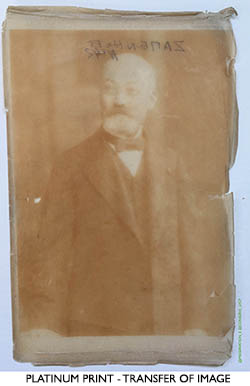
- On paper
- Paper fibres are visible when viewed using your hand held magnifier
- Matte image
- Is a black and white image
- Do not mirror or fade
- If in contact with paper or board during storage, over time they will produce an exact contact copy; a 'ghost' image, if you like. However you also get this effect with any prints which have been platinum toned
- May also be known as a Platinotype
If you look through the books which describe identifying photographic processes you will see that gelatine prints are divided into Gelatine Printing Out Papers [POP] and Gelatine Developing Out Papers [DOP]. Really, it's not necessary for you to differentiate between the two. What's important is that you know that the print is gelatine. This is due to gelatine being incredibly water sensitive, it's best to keep it away from places it might get wet. Gelatine is also prone to mould growth.

- In use from the 1880's to the present day
- On paper
- Paper fibres are not visible due to the presence of a baryta layer. (This is a coating between the paper and the gelatine to produce superior surface qualities.)
- Can be matte through to gloss. Indeed, gelatine prints can have a variety of surface characteristics
- Warm toned or neutral grey


Photographic Negatives
Wet collodion negatives
- In use from the 1840's to the mid 1890's
- On glass
- The glass is hand made so exhibits all the imperfections you would expect such as unevenly cut edges, air bubbles and an uneven surface
- The glass plate would have been hand coated with the chemicals needed to produce an image. You will see all the evidence of this hand coating including uncoated edges, run marks, swirls of chemical and an uncoated area where the photographer held the plate when they poured on the chemicals
- Image is light tan or grey
- Appears as a negative in transmitted light and a positive in reflected light
- Stored in grooved wooden boxes
- Glass is fragile so the plates may be chipped, cracked and broken
Gelatine Dry Plates
- In use from the 1870's until the 1950's
- On glass
- Image is black and white
- Image always appears as a negative
- Glass was machine made. It is even, has a uniform thickness and has uniform machine cut edges
- Plate was machine coated with chemicals. As such the coating is even
- There is a clear margin around all four edges of the plate
- Often found stored in the card boxes that the plates were originally bought in
- Glass is fragile so the plates may be chipped, cracked and broken
Plastic based negatives
Plastic based negatives are easy to identify because they are on a flexible, transparent base. There are two main types of plastic based negatives, these are cellulose nitrate and cellulose acetate. It can be very difficult to tell these two types apart by simple visual examination until they start to fall apart. Yet, it is very important to identify which is which because cellulose nitrate is highly flammable. This such an important subject to cover that we dedicating a whole blog to the preservation of negatives later, so make sure to sign up here.

You should now be feeling more confident that you can identify your photographic processes. Enjoy identifying your collections.
This post was written by Lorraine Finch ACR. Lorraine is an accredited conservator of paper and photographs.
You can contact Lorraine Finch in the following ways: E: paperconservation@btinternet.com | W: www.lfcp.co.uk | T: @conserve_lfcp | Facebook: LFCandP
